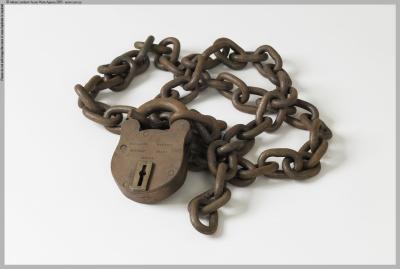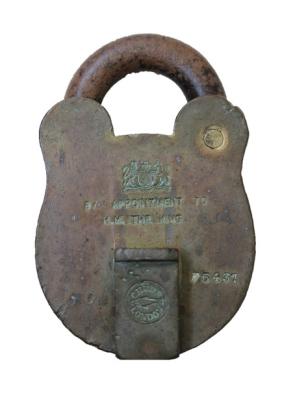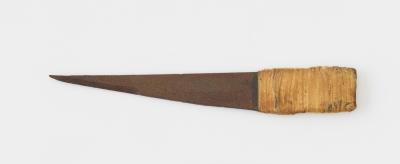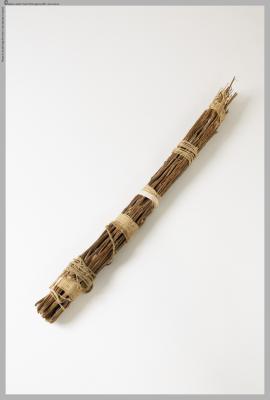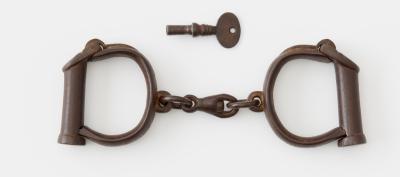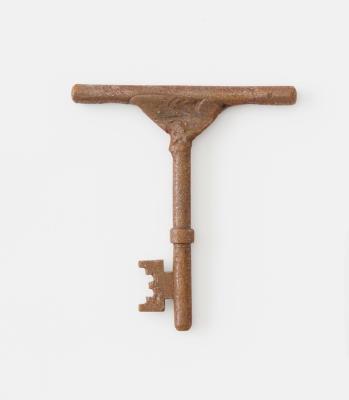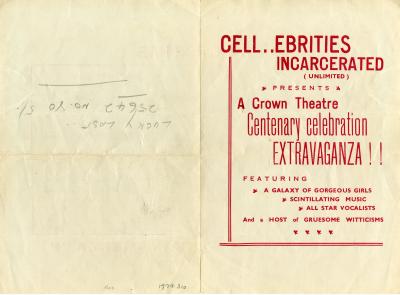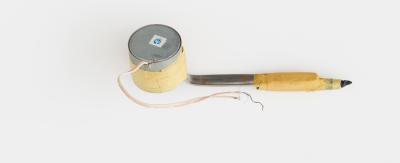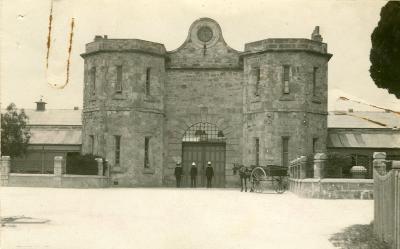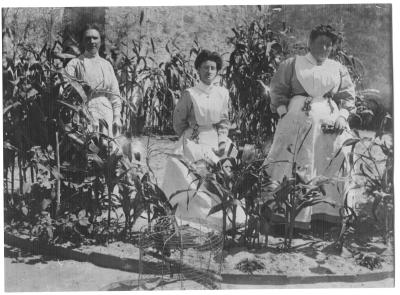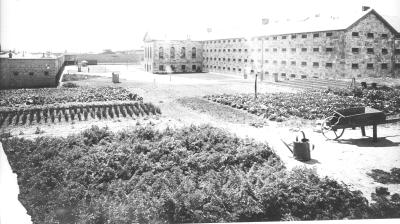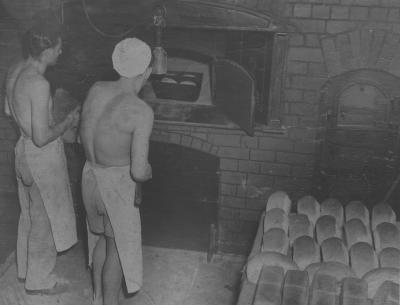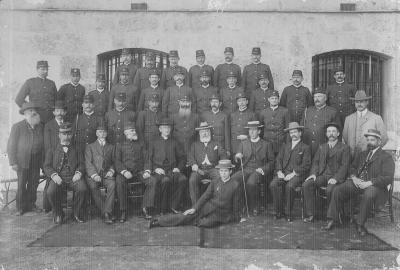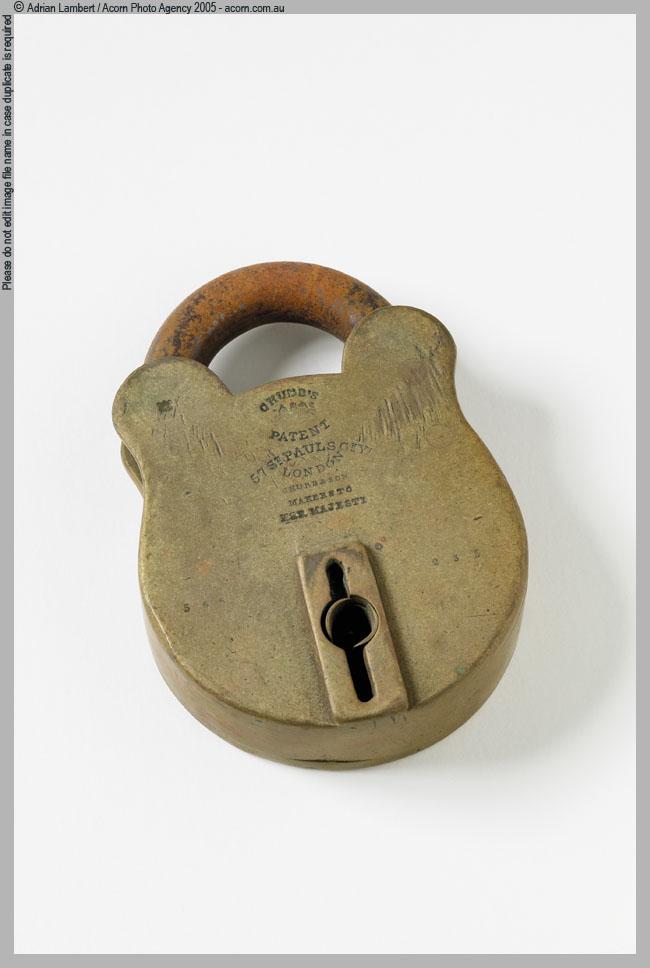Padlock
c. 1850 - 1900Large, metal, rounded, Chubb padlock. Chubb brand padlock with shield shaped brass casing. Flat front, rear and sides, with a cylindrical steel staple in the locked position. A rectangular shaped vertical keyhole is present on the front with no keyhole cover. Imprinted on the front of the case is, 'CHUBB/& SONS/PATENT/57 ST PAULS CH YD/LONDON/CHUBB & SON/MAKERS TO/HER MAJESTY.'.
Details
Details
CHUBB/& SONS/PATENT/57 ST PAULS CH YD/LONDON/CHUBB & SON/MAKERS TO/HER MAJESTY.
Locks have existed, in some form or another, for millennia. Forms of security have developed as societies spread, and with these changes, locks themselves have evolved. One of the most revolutionary changes was the invention of the padlock. At the root of this device is its portability; the idea that a lock can be added to something and then removed again. Padlocks are a detachable lock that fastens and secures with the use of a ‘shackle’. The shackle can be a hinge or slide, with the assistance of a spring, but it is the fact that once open it can be removed that makes a padlock superior. Security at the Convict Establishment was originally controlled by Western Australia's first Comptroller-General of Convicts, Edmund Henderson, who administered the Convict Establishment for thirteen years. The primary responsibilities of the Comptroller-General were to direct convict labour, and control convict discipline. This included security measures, for both those inside the Establishment, and those out on work parties. As part of this system of control, the padlock was an essential tool, as it could be implemented where needed, and used away from the Prison site. A selection of padlocks in the Fremantle Prison Collection can be accurately dated to the convict era via their marker's marks and serial numbers. Most locks had some form of identifying mark affixed to them during manufacturing. Most of the padlocks in the Fremantle Prison Collection were made by Chubb, the premier locksmiths in the United Kingdom, who also carried the Royal Appointment seal. Most of the padlocks in the Fremantle Prison Collection were left on site when the Prison closed in 1991.
Padlocks are emblematic of the prison system, with high interpretive potential and social significance as easily recognizable forms of imprisonment and control. This collection of padlocks also has high historic significance, dating from the earliest time of transportation to Western Australia. By providing a direct link between the early period of convictism in WA, and the Outstanding Universal Value from which Fremantle Prison claims its World Heritage Listing, the collection of padlocks in the Fremantle Prison Collection have international significance.
